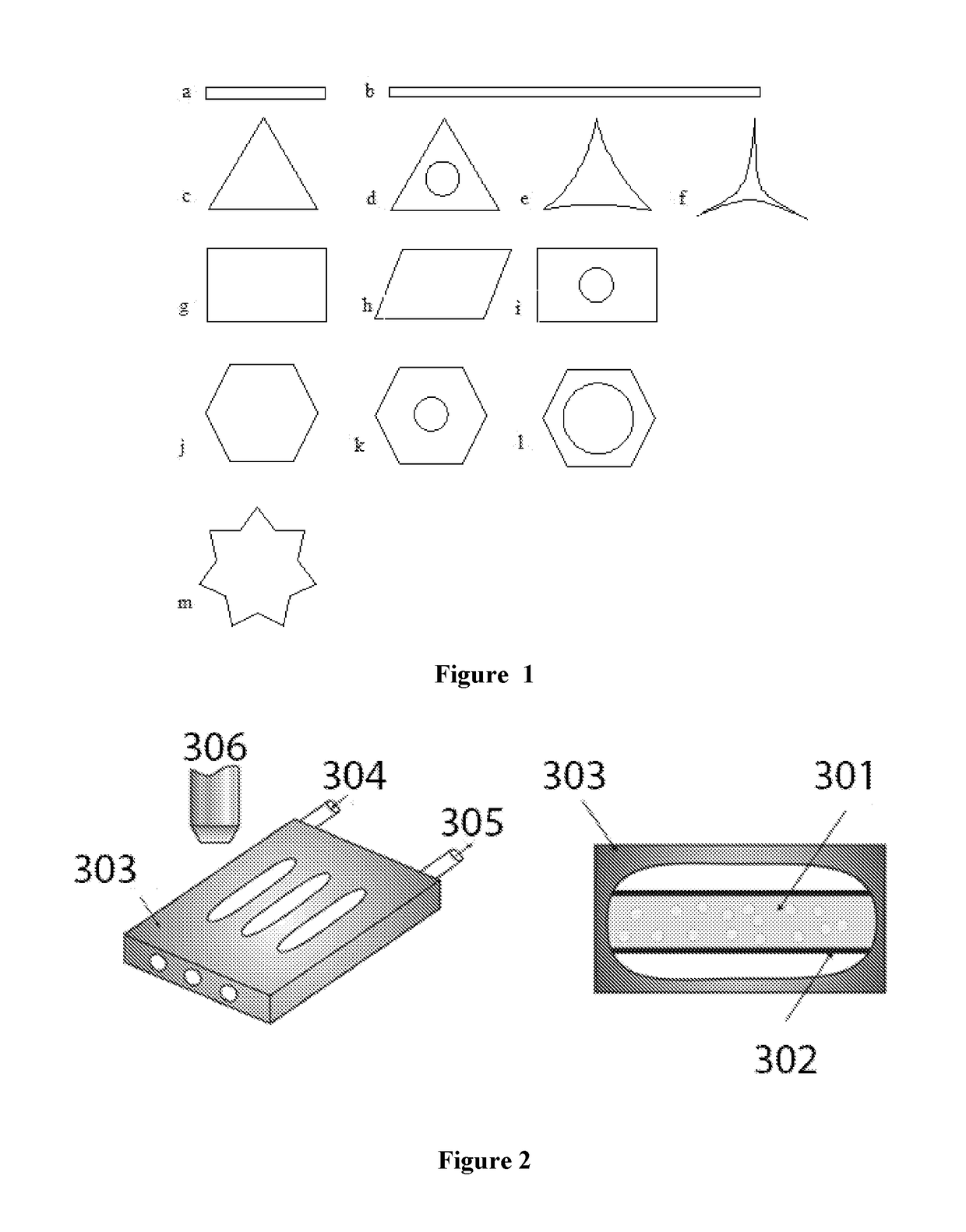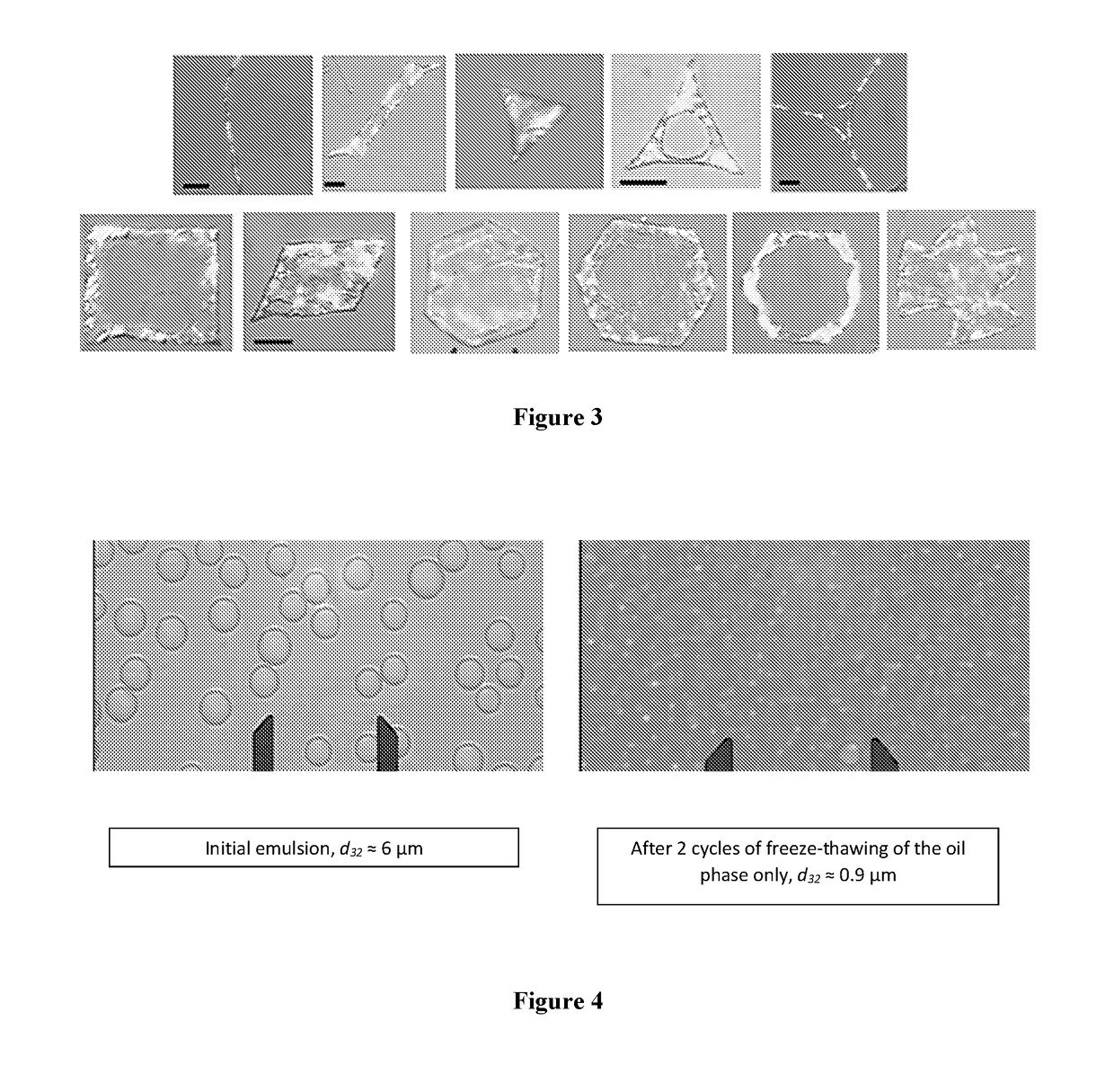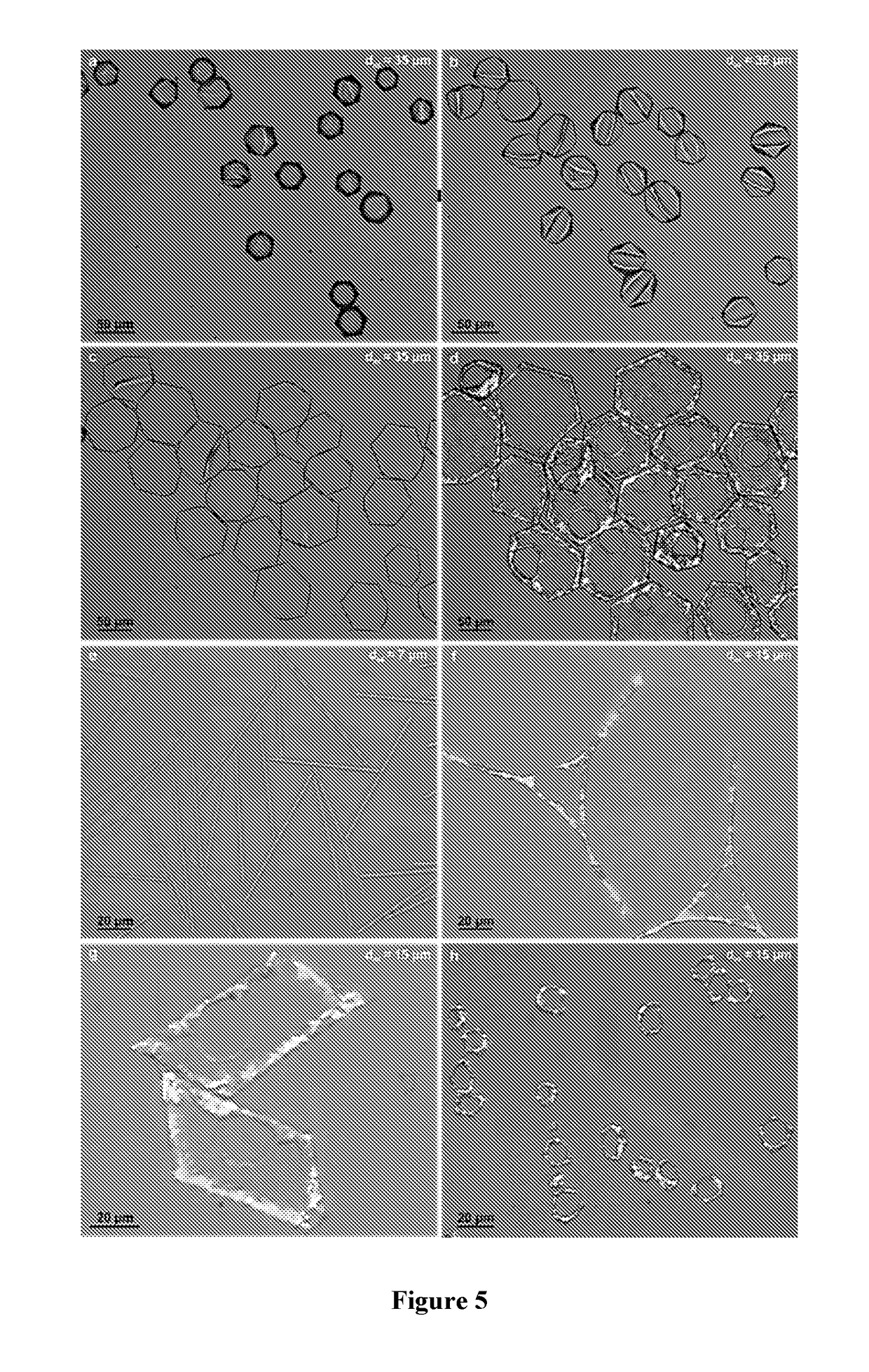Method for the preparation of particles with controlled shape and/or size
- Summary
- Abstract
- Description
- Claims
- Application Information
AI Technical Summary
Benefits of technology
Problems solved by technology
Method used
Image
Examples
example 1
on of Particles with Different Aspect Ratios
[0144]The current example demonstrates the preparation of solid particles with different aspect rations, as illustrated in FIG. 1. The nonionic surfactant, Tween 40, is dissolved into water. Its concentration is 1.5 wt. % with respect to the mass of water. Then hexadecane droplets with diameter 15 μm are injected into the water phase. The concentration of the droplets is 1 vol. % with respect to the whole amount of emulsion. The emulsion [301] is put in a capillary [302] and put in thermostated chamber [303]. There is cooling liquid which circulates throughout the vessel [304, 305].
[0145]The initial temperature is 298 K and the cooling rate is 1.4 K / min. As a result the drops deform to hexagonal prisms and then freeze. Their aspect ratio (final-to-initial length ratio) is 4. The initial temperature is 298 K and the cooling rate is 0.16 K / min. As a result the drops deform to rod-like or fibrilar particles. Their aspect ratio (final-to-initi...
example 2
on of Submicron Drops and / or Particles
[0146]This example demonstrates the drop-size reduction, which is illustrated in FIG. 4. 0.6 wt. % Brij 58 is dissolved in water and 0.4 wt. % Brij 52 is dissolved in hexadecane. The hexadecane is dispersed in water in volume ratio 1:3, through membrane emulsification. The emulsions are cooled down from 298 to 278 K in a fridge and then heated back up to 298 K. After two cycles the final drop size 0.9 μm in diameter. Depending on the final temperature, the droplets could be liquid or solid.
example 3
ation
[0147]The current example demonstrates the preparation of polymerized particles with different geometrical shapes, as demonstrated in FIG. 1. The nonionic surfactant, Tween 40, is dissolved into water. Its concentration is 0.15 wt. % with respect to the mass of water. Then stearyl methacrylate droplets with diameter 10 μm are injected into the water phase. The concentration of the droplets is 1 vol. % with respect to the whole amount of emulsion. The emulsion [301] is mixed with water soluble component—α-ketoglutaric acid, e.g. 1.75 wt. % with respect to the water phase; then put in a capillary, and finally—put in thermostated chamber.
[0148]The initial temperature of the emulsion is 298 K and the temperature in the cooling chamber is 292±3 K. As a result from the initial spherical drops undergo a transition into hexagonal prisms within 0 to 15 minutes or triangular prisms, when t >10 min. The liquid prisms could be polymerized via irradiation with UV light at 365 nm, or left to...
PUM
| Property | Measurement | Unit |
|---|---|---|
| Size | aaaaa | aaaaa |
| Size | aaaaa | aaaaa |
| Temperature | aaaaa | aaaaa |
Abstract
Description
Claims
Application Information
 Login to View More
Login to View More - R&D
- Intellectual Property
- Life Sciences
- Materials
- Tech Scout
- Unparalleled Data Quality
- Higher Quality Content
- 60% Fewer Hallucinations
Browse by: Latest US Patents, China's latest patents, Technical Efficacy Thesaurus, Application Domain, Technology Topic, Popular Technical Reports.
© 2025 PatSnap. All rights reserved.Legal|Privacy policy|Modern Slavery Act Transparency Statement|Sitemap|About US| Contact US: help@patsnap.com



